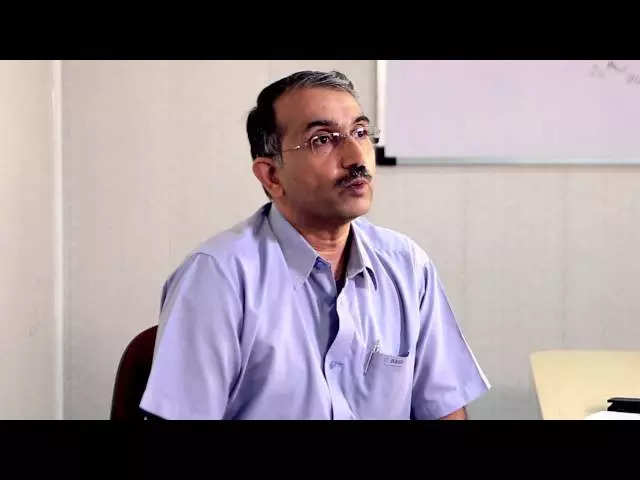
Q: Have the preparations for the shift to BS VII begun?
The regulation roadmap is not fully clear. There’s no clarity, because even in Europe, it is not frozen yet.
What’s happening is that we usually need to have some reference, and all along for BS III, BS IV, and BS VI, we had a reference. Of course it has to be done well, get implemented, and then we try to use it as it is, or make some minor tweaks and then use it here. Now, the problem is in Europe there is no alignment on that. There still could be some changes.
Even there it has to go through Parliament, which is not yet done, we don’t know where to start, what is the target? It is not defined yet. So, what do we do? Maybe we can only start gathering information like what we are talking about today, the possible options, we can do this or that.
Q: Maybe one can prepare now for a hypothetical situation. But you cannot make investments based on that. Is it that only peripheral preparations can be done now?
Yes. We can understand what Euro VII is, how it can be met, what are the concepts available to meet it. Or, what are the solutions, what Europe is thinking of, we can get some learning and then build our database for the appropriate time, then we can start designing it, and freeze the design.
Q: So, you’re saying that at this stage, not that the industry is not interested in or not intending to, but it doesn’t have the wherewithal to start preparing for BS VII.
Correct. We don’t know what it exactly is. We have some ideas based on whatever Europe is going through. People are thinking about it, but I don’t think anybody is willing to invest money on building prototypes or start testing, or start validation. We can only gather information as a very sketchy pre-study. So we are gathering information about what’s happening there, what Europe is going to do, what we can do and the like.
Basically, data gathering and then trying to understand the whole picture, but nobody will get into designing it or working much on it’.
Q: Where is India now, with BS VI. BSVI Onboard Diagnostic Device (OBD) also kicked in. WLPT (Worldwide Harmonised Light Vehicle Test Procedure) is still some time away. By 2027? So, from here, how long a preparation period is realistic for the move to BSVII?
Development period? Typically four to five years; because we have to start from the scratch, from the concept. Then the second thing is, we have to see whether the number of catalysts is increasing. For example, in a car we are using three or four right now. That is going to become five or six, depending on the fuel type. Let’s say in a truck, now I’m using four. That becomes six. Then you should also think of what is the space available to package them, and also of the Indian market, because we can’t just increase the cost like in Europe. In India nobody will buy, or they cannot afford. So a whole lot of things we’ will have to get into. The focus will be on what is the best way to economise, and still meet the target, what are the cheapest ways of doing it etc.
Q: Would the change in cost be as significant as what it was from BSIV to BSVI?
May not be, because the existing design itself could meet it with a little bit of tweaking.
Q: The Indian industry, including many of ECMA members, achieved a world record of sorts by leapfrogging from BS IV to BS VI in record time. If let’s say the government gives another stringent target, is the industry ready?
See it is. If you look at the ECMA members, all the multinationals, indirectly or directly, we will get the knowhow from Europe and our colleagues in Europe or the US. It is the OEMs who will need more time because they need to understand this technology, marry it to the vehicle, and put the vehicles to test. It has to run a minimum number of kilometres to get it validated. If it works, well and good. If it doesn’t we have to tweak it.
And again, keep the costs in mind. We have to cut the costs, because you cannot adopt whatever we get directly from Europe. It has to be Indianised. To put it all together, it takes at least three years.
Q: However, if the industry is pushed again, could the import content go up before you localise again?
I don’t think anybody will go with the imported system. What happens is that whatever they (OEMs) can localise, they will push for localisation, especially in the after-treatment. I think whatever they can, they will get from the local sources. There are some electronic components and sensors, which no way can be done here, continue to be imported. But definitely from day one, because the cost targets are so stringent, all the OEMs will push for localisation.
Q: What is the emission control industry’s business vision now, considering that the electrification megatrend is on the rise? Are you also expanding the scope of ECMA?
Not right now, because this is purely an emission world, and we’d like to stick to it and not all can get into electrification because it’s not a related industry. We are used to doing something else, and that’s a different chemistry. Diversification is possible though. But it is not something which is natural. It’s not a natural extension of what we are doing today. So, we are not really looking into any of the electrification aspects. But as individual companies, if you look at BASF, we are into chemistry. Battery is also chemistry. So frpm one chemistry to the other, it works.
Q: Do you see the scope of ECMA growing?
Yes. When we started, the focus was quite small, because we said we’ll have only a pure catalytic converter, whoever is supplying will stick to it. But today a lot of electronics are coming in. So, the scope is expanding. I can add more members. Earlier there was no electronics during the BS III, BS IV era. It was mechanical carburettors and so on. So, it was very simple. But today, with BS VI, the whole thing is driven by electronics and ECUs and all the data is being captured, so the scope increases.

